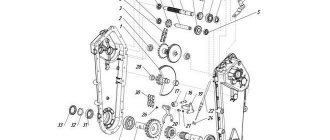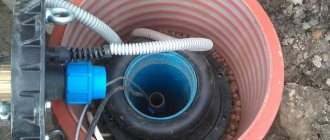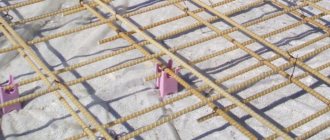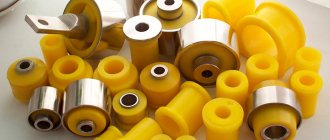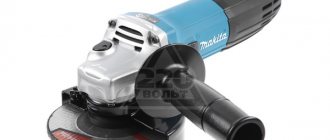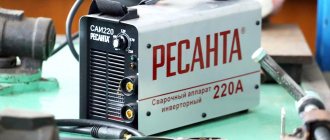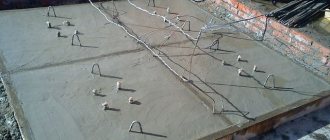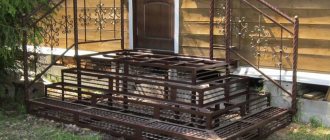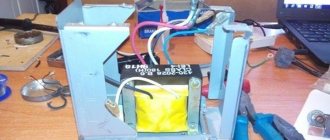Small lifting equipment is a real opportunity to equip private houses, multi-level apartments, cottages with a full-fledged lifting/lowering mechanism. Elevators for private houses differ only slightly from similar general-purpose equipment. The main distinguishing features of the equipment for small cottage elevators are their reduced dimensions and load capacity parameters. Abroad, small elevators are considered an integral element of private real estate. There, a significant proportion of low-rise buildings are equipped with elevators.
Pros and cons of an elevator in a private house
Before you think about such a serious purchase as an elevator to your home, you should pay attention to the main points and write down all the pros and cons.
And so, the advantages of an elevator in a private house:
An elevator is a fairly convenient device for transportation not only in apartment buildings, but also in private ones, because you can easily move from floor to floor, spending much less time on it.
Fast movement.- Help with lifting loads. If you have an elevator installed in your house, then you will never have the problem of moving a heavy object from one floor to another, because... The standard lifting capacity of a home elevator is up to 1000 kg!
Disadvantages of an elevator in a private house:
- High price. The first disadvantage, of course, is the very high prices for elevators - from 600 thousand rubles and above. It is at least unreasonable to purchase an elevator for such a price; it is easier to go up on foot.
- Difficulty in installation. If you are just building your future home, then, in principle, you will not have any problems, however, if you decide to purchase an elevator a couple of years after building the house, then you will have many problems with its installation, because you will have to break down walls and knock out a whole shaft for it, which will later become a good reason for a major overhaul.
What types of drives and mechanisms are there?
The cabins also differ in their “stuffing”. Cottage elevators are produced with two types of drives - electric and hydraulic, which are fundamentally different from each other.
The design of the electric lift is an analogue of the well-known standard elevator in multi-storey high-rise buildings. The principle of its operation is that a cable is wound with the help of an electric motor, rigidly fixed on the cabin platform and passed through the gearbox.
This is a reliable type of construction that has already stood the test of time. However, it also has a number of disadvantages:
- devices are entirely dependent on the presence of voltage in the electrical network;
- overall electrical equipment;
- a mandatory element is a power cable;
- due to the high voltage in the installation, it is not considered safe;
- Only highly qualified electricians are allowed to carry out repair work.
Hydraulic lifts are also electrically powered. But a large electric motor is not required to power the equipment. Therefore, to install such a mechanism you do not need a lot of space under the ceiling, and the elevator itself can even operate from a standard 220V outlet.
In elevators of this design, the engine maintains hydraulic pressure in the mechanism and moves the cabin smoothly and without jerking. The design is extremely simple and reliable, however, due to the large number of oil seals and gaskets, as practice has shown, it is necessary to frequently check all elements for wear. Plus, seals often have to be changed.
Types of elevator to a private house
In order to choose an elevator, you need to understand what types of elevators there are for a private home.
The modern elevator market offers a huge range of elevators for different tastes and material capabilities:
- Pneumatic elevators. The pneumatic elevator is the most modern model that meets all customer needs. Such an elevator is a specific capsule without any cables, the movement of which occurs in a vacuum under the force of special pumps. The advantage of such an elevator is its simple installation. The elevator is also equipped with a safety system - if any breakdown occurs, the elevator capsule will immediately go down.
- Hydraulic lift. In such an elevator, the lifting of the cabin occurs due to the work of the piston, which lifts the cabin.
- Conventional electric elevator. The most common elevator is electric, the operation of which is based on a special power mechanism - it lifts the elevator cables and moves the cabin up and down. However, this type has 2 significant drawbacks - the elevator is very loud and difficult to install, since you will have to hire a whole team of builders to tension and fasten the cables.
Review of elevator manufacturers for suburban real estate
There are more than a dozen well-known manufacturers of lifting devices for cottages, townhouses, and villas. Even more home elevator sellers.
Mostly, the market offers products from foreign manufacturers or joint companies. Below is an overview of some of the companies that may be of interest to private property owners planning to install an elevator in their home:
IVG branded products
One of many models of small passenger elevators from IVG.
The equipment is distinguished by high quality workmanship and ease of use for users. Italian manufacturer of lifting/lowering equipment. Italians offer Domus and Superdomus series elevators to owners of cottages, townhouses, and villas.
Electric model without counterweight, geared:
- load up to 300 kg,
- rise up to 6 m,
- transport speed 0.15 m/s,
- power – 2.2 kW.
- The doors of the passenger cabin are glass, sliding or hinged.
Hydraulic elevator without machine room, with direct telescopic suspension or with indirect telescopic and rope suspension:
- load up to 300 kg,
- rise up to 12 m,
- transport speed 0.15 m/s,
- power 1.1 kW.
- Cabin doors are glass, sliding or hinged.
Lifts can be made to order with different designs, equipment, and configurations.
VIMEC products
Vimec elevators fit well into the home interior.
The equipment is made at a high technological level. The interesting interior decoration of the passenger cabins attracts attention. Another Italian company producing elevators. Develops and supplies hydraulic and electric models to the small lifting equipment market. Hydraulic elevators based on a self-supporting steel shaft, silent, smooth running, safe:
- load up to 400 kg,
- rise 12 m,
- transport speed 0.15 m/s.
- power 1.8 kW.
- configuration of passenger cabins more than 14 variations.
Electric elevators without counterweight, without machine room. Manufactured using environmentally friendly materials:
- load up to 400 kg,
- rise up to 15 m,
- transport speed 0.15 m/s,
- power 1.5 kW,
- configuration of passenger cabins more than 10 variations.
Lifting mechanisms Thyssen Krupp AG
Small elevator equipment from the German company Thyssen Krupp AG are modern engineering solutions, often in appearance reminiscent of technical devices of the future.
A German alternative to the Italian manufacturer. A company from Germany supplies the market with at least three models of lifting mechanisms for installation in cottages.
Hydraulic elevators of the Orion series without a shaft:
- load up to 400 kg,
- rise up to 12 m,
- speed 0.15 m/s,
- power 2.8 kW.
Hydraulic elevators of the Gulliver series - platform in shaft version:
- load up to 400 kg,
- rise up to 12 m,
- transport speed 0.15 m/s.
- power 2.8 kW.
Electric winch elevators of the Synergy series, which have a relatively low level of energy consumption and compact shaft dimensions. They do not require an engine room, have a low noise level and smooth running:
- load 320 kg,
- transport speed 1.0 – 1.6 m/s,
- rise 45 m,
- power 3.5 kW.
Freight elevators Pneumatic Vacuum Elevators LLC
The product of the American company Pneumatic Vacuum Elevators LLC impresses with its simple but effective developments.
However, this elevator equipment only looks simple in appearance. The American company and its interesting solutions for small pneumatic elevator projects. This is one of the options ideal for private housing construction. The company makes lifting mechanisms for 2, 3, 4-story buildings.
Passenger pneumatic elevator UB30 with a shaft and a cylindrical cabin, designed to transport one person:
- load up to 160 kg,
- internal diameter of the cargo compartment 0.65 m,
- maximum height of the elevator shaft 11 m,
- transport speed 0.2 m/s.
Passenger air lift UB37 for 2 people:
- diameter of the shaft and passenger cabin 0.95 m,
- load 204 kg,
- maximum height of the elevator shaft 11 m,
- transport speed 0.2 m/s.
Passenger pneumatic elevator UB52. The design is intended for the transportation of people with disabilities and for standard use:
- load 240 kg,
- cabin diameter 1.2 m,
- maximum height of the elevator shaft 11 m,
- power 5.5 kW,
- transportation speed – 0.2 m/s.
The walls of the shaft and cabin of all American elevator models are made of transparent plastic, which provides a panoramic view during movement. The equipment is manufactured in two configurations - with the vacuum pump located inside the shaft or at a remote distance.
Lifts from the DNDT range
Of course, small elevators are not spared in China either.
In particular, the Chinese company DNDT provides the market for small lifting equipment with inexpensive devices. A Chinese company that produces elevators for cottages under the Home Lift brand. Products from China, mainly hydraulic, have relatively low prices:
- load from 250 to 400 kg,
- transport speed 0.2 – 0.4 m/s,
- power 1.5 kW,
- rise up to 25 m.
The cost-effectiveness of equipment in terms of power consumption is ensured through the use of an alternating current frequency converter in the control circuit.
SEC brand elevator equipment
Slovenian company producing shaftless home elevators of various load capacities:
- rise 15 m,
- load from 180 to 450 kg,
- transport speed 0.15 m/s,
- number of passengers 2-6 people,
- power 2.5 kW.
What to look for when choosing an elevator for a private home
And so, we smoothly move on to the main characteristics that you should pay attention to when choosing an elevator.
The most important criteria are:
When choosing an elevator for your home, be guided by how heavy the loads you plan to transport in it: just climb from floor to floor or transport furniture and cargo in it.
Load capacity.- Design. There are a huge number of designs for the elevator: you can choose the finish of the elevator that matches the interior of your home.
- Price. Naturally, an important component in choosing an elevator will be the price; as mentioned earlier, the price starts from half a million and varies in the range of 500,000-1,000,000. rubles
How to stay safe
To ensure security, you need to apply several techniques:
1. Mandatory use of a safety rope. This is a simple and reliable way to protect people if the main cable breaks. You can use a drum with a cable secured between ratchets from a passenger car. 2. Regular checks for the presence of lubrication in the mechanisms, the uniformity of the cables and the serviceability of all structural components. This basic elevator maintenance is a must! 3. It is also necessary to have an emergency button and grounding of the elevator electrical equipment. 4. You can install a non-latching button in the control unit. When pressed, the elevator moves. If you release the button, it stops.
How to install an elevator in a private house
Let's imagine that you have decided on the brand and model of the elevator, but now you are faced with the task of how to install it correctly? You won’t be able to install an elevator yourself; it’s quite unsafe, and it’s also very difficult. For high-quality installation, the best solution would be to contact a company that has been doing this for a long time, read reviews on the forums and select a company that will satisfy you as much as possible. In addition, the elevator is a complex device that requires close attention; in order to avoid damage, it must be constantly checked. The developer company usually gives a long guarantee when installing an elevator, so you can rest easy.
Safety comes first
An elevator structure is a potentially dangerous object, so its arrangement must be approached with all responsibility.
PHOTO: If you decide to make an elevator with your own hands, then remember that all mechanisms must be regularly checked and maintained
When installing a home elevator, you must ensure that the mechanism is protected from accidental entry by children and pets and that the doors, which should not be opened during movement, operate adequately. It is imperative to provide insurance for the cabin in case of cable breakage and grounding of the cabin power supply.
Make sure that the elevator does not start moving until people have fully entered or exited it. This is the only way to avoid serious injury.
PHOTO: And be sure to work with your family, especially children, about the rules for safe use of the structure
Purchase and installation of an elevator
To purchase an elevator, you can go to the sellers’ website, where you can see all the models offered and choose the one that suits you.
After choosing, the site administration will contact you; this is done to clarify the dimensions of the future elevator shaft. Then you can drive up to the warehouse and see the model live. Well, then everything is simple - you pay for the elevator itself and its installation, which can cost up to 20 thousand rubles.
And so, in this article we looked at the main points that will definitely help you when choosing and purchasing an elevator for your private home.
Design and finishing
supplies and installs cottage elevators in Moscow in a standard version or manufactured according to an individually developed project, taking into account the wishes of the customer. The high level of professionalism of our specialists allows us to use any design ideas and skillfully translate them into engineering developments of technologically advanced lifting devices. In the manufacture of various decorative elements, thanks to which the implementation of even the most daring decisions becomes possible, genuine leather and valuable wood, heavy-duty glass and mirrors, stainless steel and metal sheets with an original texture are used. The possibility of using an individual approach in the manufacture of an elevator allows you to install a cabin of a shape that will ideally fit into the space intended for the elevator.
What nuances are taken into account?
The question often arises, which door to choose. At the moment there are two types of structures. These are swing and telescopic. But the decision is not made only at personal discretion. Seats in the stopping and boarding area are taken into account. For the first option you need to have more free space. Telescopic is an opportunity not to take up much space in the hall. If there are no problems with space limitations, then you can choose any.
Roller blinds are one of the simplified options in terms of installation and cost. In order for such a structure to move, a winch with a power reserve is mounted. In addition, reliable components are purchased:
- Electrical mechanisms.
- Control station.
- Security nodes.
In addition, the cabin frame is prepared in advance. For this, a metal profile is used (the strongest one is selected), after which it is sheathed with the selected material (wood, plastic, etc.).
Place for arranging an elevator
An important step, since the ease of use, strength and safety of the structure will depend on it. First of all, pay attention to the walls to which the lift shaft will be attached. At least one of the walls must be load-bearing and there must be no defects or damage on it.
It is strictly forbidden to attach an elevator shaft to a wall whose masonry consists of foam concrete. It is also prohibited to attach to a wall whose thickness does not exceed one layer of masonry. This is regulated by the fact that the overall design of the lift has an impressive weight, and frequent use will quickly destroy the unreliable wall, which will lead to an accident.
Installation of all elements must be carried out according to the instructions and in a strictly established order. An elevator, like any other mechanism, has several key components that must be correctly connected to each other and securely fastened.
Build an elevator to the cellar with your own hands
Looking for an elevator? Leave a request, we will help you find an elevator
brings to your attention unique cottage elevators that have impeccable quality and individual design. The elevators for cottages presented in our catalog are manufactured at the largest factories in Europe in accordance with the most stringent international standards, as well as norms and requirements for safe operation.
Impressive selection
The range includes cottage elevators from various manufacturers, with stylish design and high performance characteristics.
A variety of modern models will allow you to choose exactly the elevator for your cottage that will optimally meet your requirements and interior features.
What do we offer
Our experienced specialists will help you choose the right elevator, deliver the model you have chosen, install this equipment, and, if necessary, carry out scheduled maintenance.
Advantages
Any elevator for a cottage presented in the assortment of our company has a number of significant advantages. First of all, this is impeccable execution and professional installation of equipment. Of no small importance are the first-class quality of finishing materials, impeccable hydraulics and increased safety of the equipment. Convince yourself of the professionalism of our craftsmen - check out our portfolio.
In 2022, we began producing our own metal elevator shafts for panoramic elevators. Now the customer, when ordering an elevator from our company, has the opportunity to choose more design options and technical solutions for observation and glass elevators.
The ability to equip our elevators with metal frame shafts designed for glazing allows us to offer our customers inexpensive, but beautiful and high-quality panoramic elevators.
Important Features
Such a purchase will add respectability and comfort to your country house, without burdening you with significant expenses and worries about qualified technical maintenance. By ordering an elevator from our company, you receive first-class service and comprehensive maintenance of high-quality equipment from the world's leading manufacturers.
Design, supply and installation of elevators
Source
Cabin and door dimensions
According to elevator norms and rules, the lifting capacity of the cabin and its dimensions are connected by a certain relationship. It is impossible to make a 1500x1500 mm cabin for an elevator with a load capacity of 200 kg. For example, an elevator with the most popular cabin with dimensions of 900x900 mm has a load capacity of 300 kg. The conclusion is that such an elevator can easily accommodate 4-5 people. In terms of weight, this is true, but 2-3 passengers will be comfortable in such a cabin. Why all this complexity? Moreover, Clients often ask to choose an elevator for one person or for 100 kg. However, such elevators are not produced. The minimum load capacity will be 225 kg.
If we talk about some recommendations, then a cabin of 900X900 mm would be a reasonable minimum, and 1000x1000 mm would be optimal. These dimensions will be more than enough for everyday comfortable operation of the elevator. However, these recommendations will not be appropriate if you have special requirements for moving a wheelchair. Then you need to consider a cabin of 1000x1200 mm (unaccompanied) or 1100X1400 mm (with assistance).
As for door sizes, in most cases an opening with a width of 700 mm will be sufficient, but for a wheelchair you need to talk about an opening of 800 mm.
Door type
There is a fundamental distinction between automatic and swing doors. In everyday life (in offices, in the entrances of residential buildings) we deal with automatic doors. We recommend that such doors be primarily considered for a cottage elevator. They are more convenient (they open/close themselves), more modern (equipped with a frequency-controlled drive, which allows you to regulate the smoothness and speed of their operation), safer (equipped with a photo curtain that prevents the doors from being jammed at any height).
Questions arise: why even choose swing doors that need to be opened by hand, like an ordinary interior door? The fact is that doors with an automatic drive, opening to the side, require a certain width of the shaft. Sometimes this width is simply impossible to provide. In addition, the type of doors is also affected by the height of the upper floor. For automatic doors it is 2600 mm, and for swing doors 2450 mm.
Requirements for a home lift
The main criterion for an elevator is its load capacity. To make a cellar elevator with your own hands, you need to carefully study the structure of this structure and the requirements that apply to it.
Standard elevators consist of the following parts and mechanisms:
- Lifting device. Operates by manual force or electricity.
- Platform. A base used to accommodate a movable fragment.
- Cabin. Designed to accommodate a person and cargo. Can be open or closed.
- Rails. They are mounted on the wall and serve as guides for the movement of the cabin.
- Controls. These include starters, relays, fuses and other parts that regulate the operation of the structure.
A homemade elevator to the cellar must meet the following criteria:
- safety;
- sufficient load capacity;
- ease of use;
- efficiency;
- availability of an insurance system;
- aesthetics;
- durability;
- Possibility of DIY installation.
When choosing a control method, it is recommended to use a remote control with lifting, lowering and emergency stop buttons.
